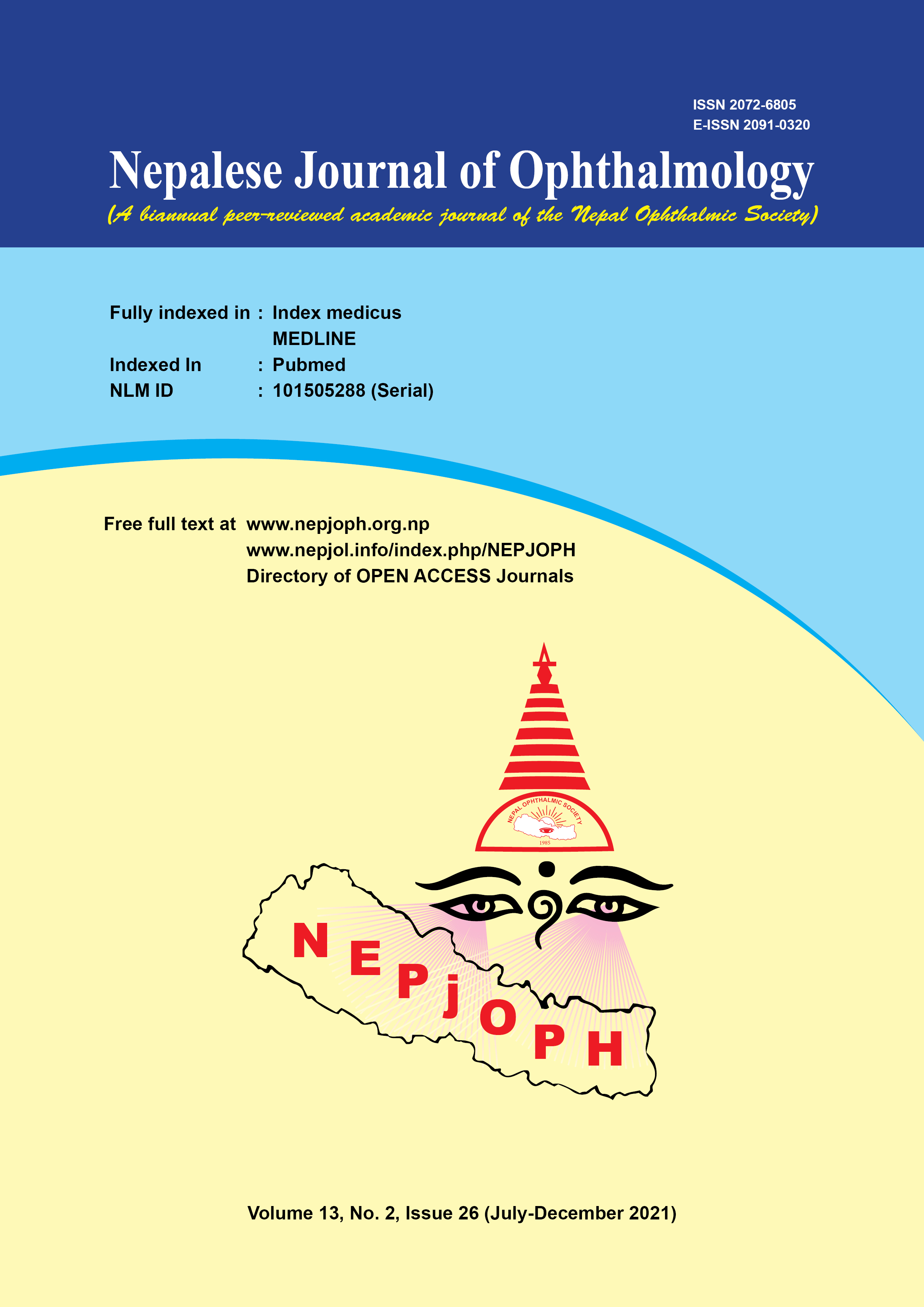Barriers to Cataract Surgery in Peri-urban Regions of Eastern Nepal
DOI:
https://doi.org/10.3126/nepjoph.v13i2.31731Keywords:
Barriers, Cataract, Nepal, SurgeryAbstract
Introduction: Despite cataract being a condition easily treated by surgery, it continues to be the leading cause of blindness worldwide (35.15%). In Nepal, the proportion of blindness due to cataract is much higher, with cataract accounting for 62.2% of all blindness. An effective method of decreasing this figure is by addressing the main barriers preventing people from accessing cataract surgery. Knowing that these barriers are dynamic and region-specific, our study aimed to determine the current barriers faced in Morang and Sunsari districts of Nepal.
Materials and methods: Subjects were patients attending a cataract surgical camp, who had unilateral or bilateral blindness due to cataract. A survey was administered to determine the factors contributing to their delay in receiving treatment for cataract. Furthermore, the percentages of male and female subjects with bilateral blindness receiving treatment at the surgical camp were compared to the percentage of males and females with bilateral blindness due to cataract in Morang and Sunsari.
Results: The main barriers for both subjects with unilateral and bilateral blindness were the inability to afford treatment and the lack of awareness that cataract is treatable. Additionally, although more women were bilaterally blind due to cataract compared to men in Morang and Sunsari, men were more likely to receive treatment compared to women.
Conclusion: Policies targeted at reducing costs of surgery, increasing the awareness of cataract surgery, and specifically increasing women’s access to cataract surgery would be effective methods in decreasing the prevalence of avoidable blindness due to cataract in Morang and Sunsari.
Downloads
Downloads
Published
How to Cite
Issue
Section
License
Copyright (c) 2021 Nepalese Journal of Ophthalmology

This work is licensed under a Creative Commons Attribution-NonCommercial-NoDerivatives 4.0 International License.
This license enables reusers to copy and distribute the material in any medium or format in unadapted form only, for noncommercial purposes only, and only so long as attribution is given to the creator.




